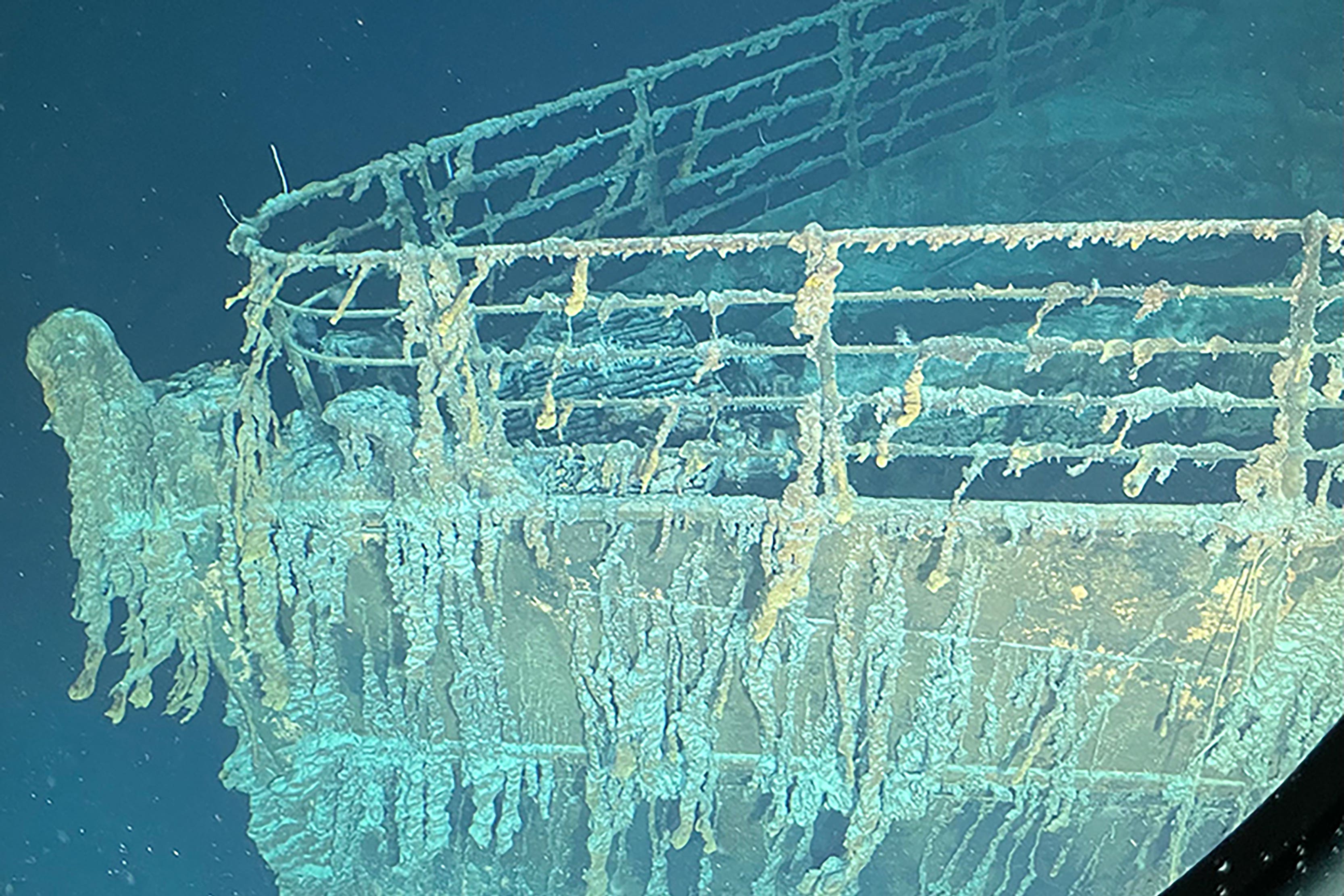Time to consider whether Titanic trips should end, society president says
Five people died in the voyage to the Titanic wreckage.

It is time to consider whether trips to the wreckage of the Titanic should end following the death of five people on board the Titan submersible, the president of the Titanic International Society has said.
The five people on board the deep-sea vessel – Hamish Harding, Shahzada Dawood, his son Suleman Dawood, Paul-Henri Nargeolet and the chief executive and founder of OceanGate Expeditions Stockton Rush – were killed after it imploded on its way to the wreckage.
In a statement published online, Charles Haas, president of the Titanic International Society, an organisation set up in 1989 to preserve the history of the Titanic, questioned whether visits to the historic site 3,800m below the surface should continue.
He said: “It is time to consider seriously whether human trips to Titanic’s wreck should end in the name of safety, with relatively little remaining to be learned from or about the wreck.
“Crewed submersibles’ roles in surveying the wreck now can be assigned to autonomous underwater vehicles, like those that mapped the ship and its debris field in high-resolution, 3-D detail last summer.
“The world joins us in expressing our profound sadness and heartbreak about this tragic, avoidable event.”
Mr Hass also paid tribute to Mr Nargeolet, saying his “consummate knowledge of the wreck and wreck site was unique and unparalleled”.
He added: “Commander Paul-Henri Nargeolet brought to this expedition more than a quarter-century of expertise, making more dives to Titanic’s wreck than anyone on earth.
“His willingness to share that information kept the world informed about Titanic’s deteriorating condition and helped to rewrite significant parts of the ship’s history. Sadly, that irreplaceable knowledge has been lost.”
The Titan was on its third visit to the wreck, having previously made trips to the site in 2021 and 2022.
Mr Haas said there needed to be an investigation into the voyage.
He said: “We believe that an extensive, detailed investigation by the US Coast Guard, the National Transportation Safety Board and/or their Canadian counterparts clearly is warranted.
“It should deeply inquire into the submersible’s design, structure, communication and safety systems, owners’ policies and emergency preparations and procedures, and the proximity, state of readiness and deployment of deep-sea rescue systems to the site.
“Additionally, intensive pre-service inspection of deep-sea submersibles should be required by international regulation. Just as Titanic taught the world safety lessons, so, too, should Titan’s loss.”
Until 2019, no one had visited the wreck for 14 years before five dives were made in eight days to take the first ever 4K images of the ship as it decayed.
Mr Nargoleot is believed to have visited the wreckage more than 30 times.
Film director James Cameron, who has visited the wreck a number of times and was a friend of the Frenchman, said there were warning signs ahead of the voyage to the wreck.
Speaking to ABC News about submersible engineering, Cameron said: “This is a mature art and many people in the community were very concerned about the sub.
“A number of the top players in the deep submergence engineering community even wrote letters to the company, saying that what they were doing was too experimental to carry passengers and they needed to be certified.”